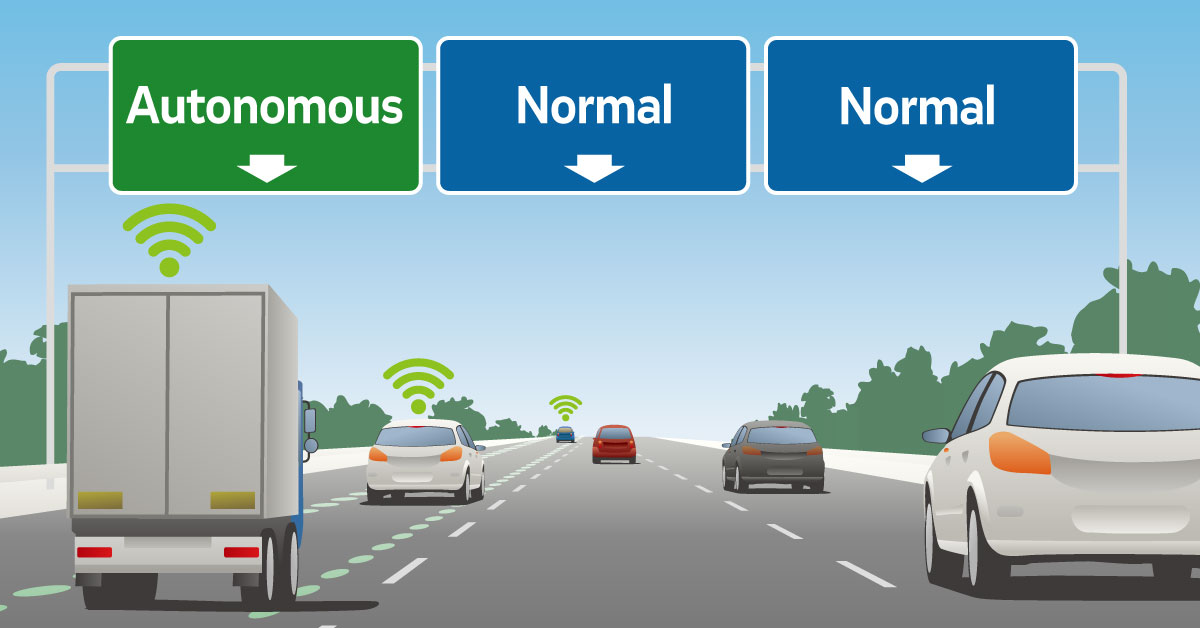How Will Autonomous Trucks Influence the Future of Transportation?
As trucking transportation continues its accelerated growth in North America, we see new technologies rapidly arising to address industry demand for fuel-efficient, cost-effective and safety-conscious practices. While some of these technologies only exist in theoretical terms, many of the building blocks for self-driving trucks are already in place, proving that autonomous driving systems may be a viable, innovative solution to these issues. With various degrees of real-world testing already underway, we may see autonomous trucking become commonplace on our highways in the near future.
While the implementation of a fully autonomous truck needing no human involvement may not be a possibility in the consumer supply chain for years to come, lower levels of automation have already gained traction in the transport industry. Defined by the National Highway Traffic Safety Administration as a vehicle that can self-operate a large portion of the time, but will relinquish control to a human driver under certain weather, traffic and terrain conditions, a level 4 automated truck could offer reduced operating costs to businesses, improved productivity for drivers and enhanced delivery efficiency for vendors and consumers.
These semi-autonomous tractor trailers would operate independently on highways, but then have an on-board human driver take over in cities, high-traffic areas and when exiting highways. Acting as a supplement to the driver instead of a replacement, autonomous driving systems can help their human counterparts achieve maximum efficiency. Drivers will still be needed for freight loading and unloading, storefront deliveries, refueling, equipment troubleshooting, repairs and more, as detailed above.
While the truck operates on its own, the driver can multitask with other necessary duties such as making calls, planning routes, reviewing invoices or even catching up on sleep. According to the National Highway Traffic Safety Administration, in 2015 U.S. roadway accidents involving large trucks resulted in 116,000 injuries and 4,067 deaths, possibly intensified by driver fatigue. A partnership between precise, self-driving systems and less stressed, more alert drivers could lead to a decrease in roadway accidents and fatalities.
In this vision of vehicle autonomy, automated truck driving may even help companies address the issue of driver shortages, needing fewer people to complete more runs. With the combined efforts of the driver and the autonomous software, increased run time, faster delivery and reduced driver fatigue could lead to enhanced overall safety and efficiency throughout the chain of delivery.
Combining automation technology with other emerging freight practices such as truck platooning, trucking firms may see an even greater return on investment through fuel savings. The practice of truck platooning involves a convoy of two or more electronically connected tractor-trailers, in which the vehicles are controlled through a combination of smart technology and human monitoring. A lead vehicle with a human driver heads the platoon traveling at a highway pace, while the following autonomous truck runs a very short distance behind its leader. The vehicles have smoother aerodynamics and less drag while in this formation, enhancing fuel efficiency.
Developers are projecting that automated driving devices will be able to provide a level of precision, control and speed in reaction times that are not possible through human manual control alone. Much of the technology required for this high level of awareness between a truck and its surroundings are already installed in and used by the latest vehicle models. Cameras, scanners, radar sensors, GPS, cruise control, MPG trackers and collision avoidance systems will all play a role in the communication network of autonomous vehicles.
The advanced, real-time data collected though these systems could contribute to an even greater network of connectivity throughout the delivery process. The added visibility and productivity of this network could help carriers, brokers and 3PLs navigate the evolving landscape of freight transportation logistics and provide a superior level of speed and precision to the consumer. While we will have to wait and see what changes autonomous driving will bring to the industry, the technology holds great potential to enhance current trucking infrastructure and heighten delivery efficiency.



